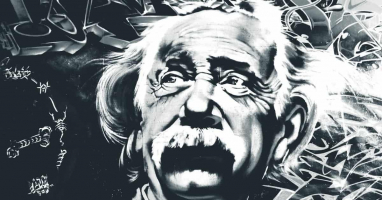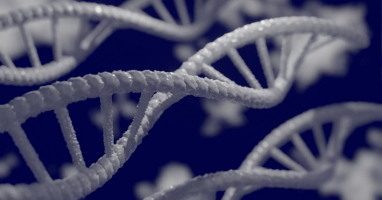I wrote this article in Japanese and translated it into English using ChatGPT. I also used ChatGPT to create the English article title. I did my best to correct any translation mistakes, but please let me know if you find any errors. By the way, I did not use ChatGPT when writing the Japanese article. The entire article was written from scratch by me, Saikawa Goto.
Introduction
Movies and books covered in this article

Three takeaways from this article
- What a surprise, symmetry is related to sex, too, and sweetness, too.
- The idea of “symmetry” was developed from the question “Which quintic equation can be solved?”
- What is the “Monster” with 4,154,781,481,226,426,191,177,580,544,000,000 symmetries and 196,883 dimensions?
Self-introduction article


Published Kindle books(Free on Kindle Unlimited)
“The genius Einstein: An easy-to-understand book about interesting science advances that is not too simple based on his life and discoveries: Theory of Relativity, Cosmology and Quantum Theory”
“Why is “lack of imagination” called “communication skills”?: Japanese-specific”negative” communication”
The quotes in the article were translated using ChatGPT from Japanese books, and are not direct quotes from the foreign language original books, even if they exist.
What is the Extremely Important Concept of “Symmetry” in Mathematics?
“Symmetry” Actually Exists Close to Us

In this article, I will write about “What is symmetry and how has its research developed?” But before explaining what “symmetry” is, let’s show how it is related to our daily lives. For example, you might be interested in this sentence:

Various studies have shown that even in humans, those with stronger symmetry start having sex earlier.

It’s also written like this:
Animals are also attracted to reflection symmetry. This is because having symmetry in their bodies increases their ability to move. Symmetry is often associated with perfectly balanced shapes. In most physical activities, symmetry can efficiently generate forward force.
Think of “symmetry” like this: if it looks the same even when folded in half, it’s called “line symmetry,” and if it looks the same even when rotated, it’s called “rotational symmetry.” Althogh the “symmetry” discussed in this article is not limited to just “the shape of things,” but it may be easier to understand it as the way that is also related to the shape of things.

In nature, “symmetry” is abundant.
The honeybee’s vision is severely limited. (omission) The only thing that sticks in the eyes of the bees with their thick-rimmed glasses is symmetry.
Bees are attracted to shapes with rotational symmetry like the hexagonal shapes of clematis flowers, Daisy and sunflowers, while bumblebees prefer reflection symmetry like that found in orchids, foxgloves, and legumes.
Even so, it is not so easy to obtain symmetry. Unless they need to put in a lot of effort and resources to symmetry, beautiful and balanced forms such as orchid and sunflower cannot be produced. Beautiful forms are a luxury, so to speak. Only the healthiest and most viable individuals in a plant have extra energy, which can be used to create a balanced form. In other words, because symmetry flowers are superior as individuals, they can produce more nectar and the sugar content of the nectar is increased. It means that symmetry is sweet.

In short, “Bees wear glasses that allow them to see symmetry.” Plants have evolved to have symmetrical shapes to be found by bees. These shapes also look beautiful to humans. That’s why people say “symmetry is sweet.”

This idea of symmetry is also important in scientific research, as demonstrated by famous scientists like Einstein. The translator of this book writes in the afterword about this topic.

In short, it seems that nature is governed by symmetry. This means that when coming up with new hypotheses, we should start by assuming that “nature prefers symmetry” and make progress from there. Einstein took this idea further and believed that natural laws and equations could be obtained by starting with the premise of symmetry, rather than ending up with symmetry as a result. This revolutionary idea led to the development of the Theory of Relativity, which propelled physics forward in the 20th century with a focus on symmetry.
In other words, it seems that nature is somehow governed by symmetry. Therefore, the idea emerged that when thinking of new hypotheses, we should assume that “nature prefers symmetry” and by doing so, we were able to achieve significant results.

It means that to fully understand our world, “symmetry” is an essential tool.
The Understanding of “Symmetry” Evolved From the “Formula for Solutions”
The beginning was something that could never be imagined as being connected to the profound nature of the natural world.

That is the “formula for solutions.”
When you were a student, you might have learned the “quadratic formula.” It’s an equation with a bunch of letters like a, b, c, x, y, and a square root symbol that you didn’t understand well. Mathematicians used to struggle to find this kind of “formula for solutions.” Thanks to their hard work, the cubic formula and quartic formula were discovered, but they stumbled upon the quintic formula. Even the most excellent mathematicians couldn’t find the quintic formula.

Abel, a genius mathematician, shed a completely different light on this problem. He proved that “quintic formula does not exist.”
Although this proof is now considered groundbreaking, it was not the case at the time. Abel was from Norway, which was isolated from its neighboring countries at the time. Far from the center of academic excellence in Paris, Abel struggled to have his achievements recognized, which took a terrifyingly long time. For Abel, it was a period of unlucky times.


But finally, Abel’s achievements were rightly recognized. This is what is written in this book:
Even mathematicians gradually began to appreciate the beauty and depth of Abel’s achievements. As French mathematician Charles Hermite put it, “Thanks to what Abel left for mathematics, mathematicians have been busy for 500 years.” In 1830, the Paris Academy awarded Abel the Grand Prize posthumously. Today, one of the highest honors for mathematicians is the Abel Prize, awarded by the Norwegian Academy since 2003. This prestigious prize, which is on par with the Nobel Prize in other sciences, comes with a prize of 6 million Krone.

The Achievements of the Brilliant Genius Galois in the History of Mathematics
Abel opened a new door, but “symmetry” was still far away.
Now, in a way that developed Abel’s work, the genius mathematician Galois accomplished revolutionary work. Galois is famous for the episode of “losing his life in a duel at the age of 20,” but despite passing away at such a young age, he left behind remarkable achievements that transformed the mathematics world.

Like Abel, Galois also experienced various misfortunes and his achievements were not recognized during his lifetime.
His groundbreaking paper was presented as his thesis, but the professor at the time failed to recognize its true value and even dismissed it as “meaningless research.”

However, it may be cruel to blame the professor who didn’t recognize Galois’ work, because Galois “created a completely new field that had never existed before” all by himself. Because it was a field that didn’t exist before, he had to explain “completely new concepts that no one had ever thought of before” using only existing words.
For example, it would be impossible to explain the structure of a “cell phone” using only words that existed during the Edo period (Japan about 400 years ago). Galois was in a similar situation. It’s not the fault of the professor who couldn’t appreciate his work, but rather that Galois was too much of a genius.


It was thanks to his friend Chevalier that Galois’ achievements were recognized. Before the duel, Galois wrote down his thoughts and entrusted them to him. After Galois’ death, Chevalier, who did not have mathematical knowledge, struggled to get his friend’s work recognized in the mathematical community. It took time, but finally the true value of Galois’ research was recognized.
The document Galois left to Chevalier contained a completely new perspective on symmetry, one of the most fundamental concepts in nature. Looking at Galois’ notes now, it’s amazing how a young person had such insight. Mathematicians have made leaps and bounds in the theory of symmetry over the past 200 years, but it all traces back to the deep ideas hidden in the scribbled notes of Galois. This young revolutionary was the first person to clearly express the language of mathematics that we use every day in our work.

So, what did Galois do exactly?
What Abel proved is that “quintic formula does not exist”. However, this does not mean that “quintic equation cannot be solved”. For example, anyone can solve the equation “x^5=1” (“x^5” is x to the fifth power). The fact that there is no formula for solutions does not mean that the equation cannot be solved. It means that there are solvable and unsolvable quintic equations.
Here, Galois thought about it. So, what distinguishes solvable quintic equations from unsolvable ones? To explain this, he created a completely new mathematics called “group theory” that had never existed before.

Group theory is like a language that helps us understand “symmetry” more easily. Just like how “English” is written using “alphabet”, “symmetry” is described using “group theory”.
Before Galois, the concept of “symmetry” existed, but there was no way to mathematically describe it. Galois paved the way for describing it on his own.
Explaining what Galois thought is difficult. This applies to all descriptions in this article, but honestly, I don’t fully understand this “symmetry”, so there may be some mistakes. It’s really difficult. I’m just trying to explain it in a way that makes sense based on what’s written in “Symmetry”. I don’t think I’m completely wrong, but I apologize if there are any mistakes.

Now, let me explain Galois’s thinking.
He thought that symmetry was related to the problem of whether a quintic equation could be solved or not. He classified various quintic equations into something called “symmetry group.” Then, he realized that whether a quintic equation could be solved or not was related to whether its symmetry group could be divided into smaller symmetry groups.
I don’t really understand what he’s saying, but you can imagine “whether the symmetry group can be divided” like prime factorization.

For example, the number “12” can be expressed as the multiplication of prime numbers “2 x 2 x 3”. However, the same cannot be done for “13” (since “1” is not a prime number, “1 x 13” is not a prime factorization). In this case, we can express “12” as “divisible” and “13” as “indivisible”. I think if you can imagine this, you can understand how the symmetry group of a quintic equation can be divided into smaller symmetry groups.
This is how various studies about “symmetry” began with Galois’ research. Eventually, it led to the discovery of an entity called the “Monster.” Let’s follow the flow from here.

Research on “Indivisible Group = Simple Group” Begins
The mathematician who took over Galois’ baton to study symmetry is Jordan. He focused on “simple groups,” which are also known as “indivisible groups.” Jordan’s research drew attention to simple groups and led to the movement to eventually create an atlas of all existing simple groups. It was in this flow of research that the “Monster” was discovered.


Cayley played an important role here. He was a lawyer who wrote a huge number of math papers as a hobby. Cayley created a table to organize the properties of symmetry, which greatly advanced the study of symmetry. The book describes Cayley’s achievements like this:
George Salmon, a contemporary of Cayley, summarized his contributions to mathematics as follows:
What mathematicians now know about algebraic structures has changed dramatically since Cayley’s time. It’s like the difference between someone who knows about the internal structure of the human body after dissecting it, and someone who only knows about the body from the outside.

In this way, various mathematicians have been involved in the study of “simple groups”, including Burnside.
Burnside proved a theorem that states “groups divisible only by prime number whose order is 2 are made up of the rotation groups of regular polygons with a dozen or so sides”. It may not make sense to you, and it doesn’t to me either. However, his proof of this theorem has enabled us to more accurately understand the properties of “simple groups”.
Furthermore, based on the theorem he proved, Burnside made a conjecture about “groups indivisible by prime number whose order is 2.” The conjecture states that “if the total number of symmetries is odd, then that symmetry group will always be divided into a simple group of shapes with prime number of sides”. I still don’t understand what he’s talking about.

It seems that once Burnside’s conjecture is proven, “the basic building blocks of simple groups can be perfectly analyzed.” Mathematicians have become optimistic that this conjecture is correct, which has led to a movement to “cover all simple groups.”
Through the involvement of many mathematicians like this, “group theory” created by Galois leads to a project to “cover all simple groups.”

Mathematicians’ Expectations are Shattered as the “Monster” is Discovered
Here enter mathematician named Matthews. He discovered a very strange simple group.
As previously thought, it was believed that simple groups were easy to capture because of Burnside’s theorem and prediction. The name “simple” gave that impression. However, Matthews discovered a simple group that did not fit the known patterns, even though it was indivisible (a property of simple groups). Such simple groups were subsequently found one after another, leading to the realization that the project of “covering all simple groups” is not as “simple” as previously thought.

And from here, the story becomes even more bizarre. A simple group later named “Monster” was discovered.
This “Monster” has Monster-level properties. It contains 4,154,781,481,226,426,191,177,580,544,000 symmetries and exists in at least 196,883 dimensions.
It’s a group that’s almost impossible to understand.
Let’s take a look at how “Monster” was discovered.

In fact the famous unsolved problem “Kepler conjecture” was related to that story.

The question of Kepler conjecture is very simple in itself: “When considering packing spheres (balls) of the same size in a space, what is the packing method with the highest packing density?” And there was already a hypothesis to this conjecture, which was the packing method called “hexagonal lattice”. However, it was difficult to prove that “hexagonal lattice is the packing method with the highest packing density”.

Now, the “Kepler conjecture” mentioned earlier is a question in three-dimensional space. In other words, it’s about packing spheres in a box with length, width, and height that everyone can imagine. However, this Kepler conjecture can be considered in any dimension.
After the Kepler conjecture was proven, mathematicians began to consider the Kepler conjecture in various dimensions, such as the fourth and fifth dimensions. In every dimension, the hexagonal lattice was still the packing with the highest density. However, something strange happened when they reached 24 dimensions. In 24 dimensions, a packing with a higher density than the hexagonal lattice was discovered. Moreover, it was found that this packing called the Leech lattice has the maximum packing density only in 24-dimensional space.

Conway, who was studying symmetry, heard about the existence of Leech lattice and that’s how the discovery story of “Monster” began.
Conway realized that Leech lattice was related to a certain simple group when he investigated it in detail. However, the properties that this simple group should have were on a completely different level. That is exactly the number I just mentioned, and it was named “Monster” because of its unbelievably huge size.
However, while Conway was able to reach the point of realizing that “there must be a simple group (Monster) with such properties if we study Leech lattice,” he was unable to actually construct “Monster.” This expression may be difficult to imagine, but let’s use the discovery story of Pluto as an analogy.

Before the discovery of Pluto, astronomers noticed that the orbit of Neptune was slightly off from what was predicted. They believed that an undiscovered planet beyond Neptune was causing the deviation, and it turned out to be true. The planet was found where they predicted and named Pluto.
A similar situation can be seen with the “Monster.” Conway claimed that if a simple group called the “Monster” existed, it would have certain properties. However, he was not able to prove its existence.


And another mathematician actually discovered the existence of the “Monster”, proving Conway’s claim to be correct. But honestly, I’m not exactly sure what it means when we say that “the “Monster” exists” though.
The story continues further. As research on the simple group progressed, a map-making project called “atlas” was planned. During the process, it was discovered that the “Monster” has a connection to theoretical physics.

Through Borcherds’ calculations, it became clear why the numbers related to the Monster of the “atlas” and the numbers related to the modular function in number theory are both related to the vertex operator algebra. This connection to string theory and physics theories about the universe makes moonshine even more peculiar. The Monster has become known as a mysterious “symmetry group of the universe.” The pattern revealed by the snowflake with this strange symmetry, which exists in 196,883 dimensions, can only be thought to resonate with the concept of theoretical physics.
In the world of physics, there is something called “string theory.” Although I won’t go into detail here, this “string theory” is expected to offer a possibility for the fusion of the two major theories of 20th century physics, “General relativity” and “quantum mechanics.” In other words, “string theory” is considered one of the candidates that could make the long-awaited fusion of these two theories possible.

In other words, this means that the “Monster” that mathematicians have discovered, which exists in the 196883 dimension, may be related to the “string theory” that may describe our real world. It’s so grand that it’s hard to understand, but the idea that something that could be called “mathematician’s fantasy” is connected to the real world is exciting.
By the way, the classification of “simple groups” was achieved by numerous mathematicians over several decades. The “proof of classifying simple groups” was not published as a single paper, but rather was achieved through more than 500 journal papers totaling over 10,000 pages written by various mathematicians. It is uncertain whether anyone has read the entire thing. The achievement of the “Monster” resulting from the research on the “classification of simple groups” is grand, but the “proof of classifying simple groups” itself can also be called grand.

“Symmetry” – Is it Useful?
In mathematics and science research, we often hear the question, “What is the point of this?” This topic is also discussed in this book, but first, let me introduce an impressive story from another book. Tada Masaru, a particle physics researcher, compares “doing research” to “arranging products on the shelves of TOKYU HANDS (a Japanese variety store).”
Actually, the world of science is similar to this. It’s like TOKYU HANDS. You see, it’s impossible to just decide to make a cell phone and develop the technology to create it right away. It’s an incredibly complex machine. So, each scholar or engineer first researches something in their own specialty. They set aside the question of how it will be useful and present their research results. This act of “presenting research results” is equivalent to “arranging products on the shelves of TOKYU HANDS.” Many scholars keep putting their research results on the shelves.
“すごい実験(Outrageous Experiment)” (Tada Masaru)
Then the next generation of scholars comes to TOKYU HANDS, looks at the shelves, and picks up things that are useful to them. They put everything together, and that’s how we get this cell phone. This is how it works; it’s the only way.


This is where the “cell phone” story comes in, but when they were created, no new technology was developed. Instead, it was made by combining various existing technologies. And each of those technologies was not originally created with the intention of making a cell phone. As Tada Masaru wrote:
If you try to develop a cell phone from scratch by saying, “Let’s develop a cell phone,” it will never be possible even after 100 years. That’s just how the world of science and technology is.
“すごい実験(Outrageous Experiment)” (Tada Masaru)

Also, mobile phones operate on a lithium-ion battery. However, when the lithium-ion battery was first developed, “nobody had any idea what it could be used for.” Yoshino Akira of Asahi Kasei made such a remark in an interview when he won the Nobel Prize for his work on the development of the lithium-ion battery.
Therefore, it is almost meaningless to take individual achievements in science or mathematics and ask, “What use is it?” Even if something is currently of unknown use, there is always the possibility that it could become a major invention that society cannot function without in a hundred years.

Based on this point, let’s talk about how “symmetry” is useful.
In fact, “symmetry” is quite useful. For example, let’s think about “Electronic Communication System”. Basically, it refers to the “Internet”.
When transmitting data through a network line, errors inevitably occur. It is impossible to reduce the errors to zero, but if we know “where the error exists in the received information,” it is possible to repair it. Furthermore, if “the error is automatically repaired,” it must be even better. And the knowledge of symmetry is used in building such systems.

Furthermore this book also describes how “thalidomide” (a drug marketed to relieve morning sickness during pregnancy) caused birth defects and how “symmetry” was essential to understand it. It also discusses the research on a life form (later named “virus”) that behaves very differently from bacteria, and how “symmetry” played a crucial role in it.
As we can see, “symmetry” is working behind the scenes in ways we may not even be aware of.

Conclusion
This book is not just about “symmetry” and “group theory”. It also includes the personal history of the author, who is a mathematician, and is quite interesting in terms of essays.

There are many human-like descriptions, such as how the author gave up his dream of becoming a spy as a child to become a mathematician, or how he became anxious when he thought he might be beaten by his colleagues in a certain mathematical proof. It’s not often that we have the opportunity to learn about the personal stories of mathematicians, and we can also enjoy the author’s unique perspective as a mathematician.

I hope you enjoy the dramatic history of the fields that transformed the world of mathematics, such as “symmetry” and “group theory”, and the struggles of mathematicians, including the author, from the past to the present.

Published Kindle books(Free on Kindle Unlimited)
“The genius Einstein: An easy-to-understand book about interesting science advances that is not too simple based on his life and discoveries: Theory of Relativity, Cosmology and Quantum Theory”
“Why is “lack of imagination” called “communication skills”?: Japanese-specific”negative” communication”








コメント